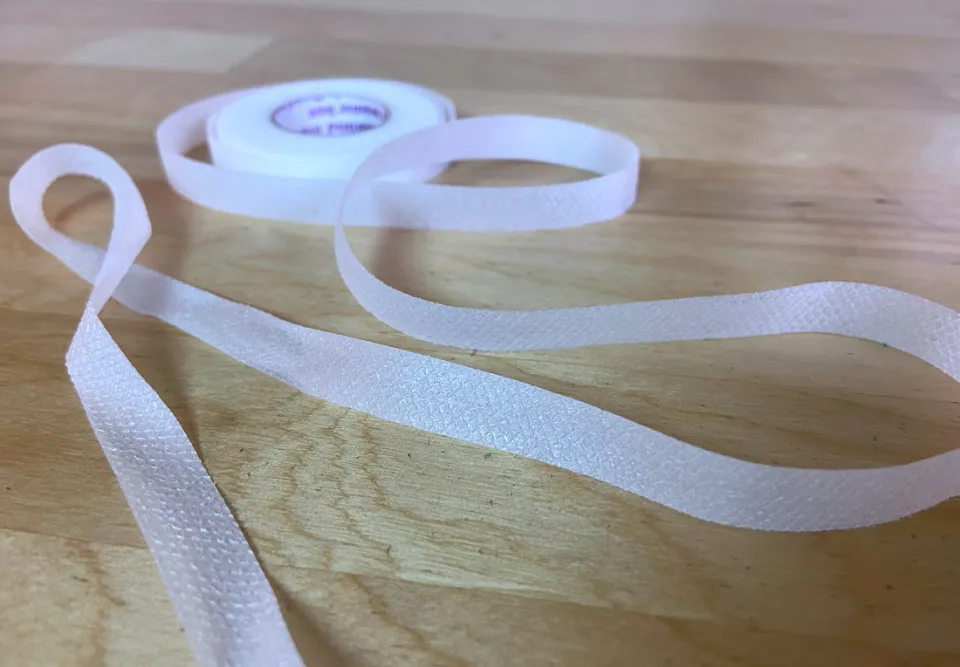Although hem tape is an excellent tool for quick hems and repairs, it can be challenging for novice sewers to use. I’m answering the most common questions about iron-on hem tape for you: how to use hemming tape? You are supposed to iron-on or pressure-pressed.
Please read on for more detailed information.
What is Hemming Tape?
Hemming tape is an adhesive tape that’s designed to fuse two layers of fabric together without any stitching involved.
Don’t be concerned if you discover that there are numerous different brands, varieties, and sizes of adhesive hemming tape available for purchase if you were to visit a store. They all function largely in the same way.
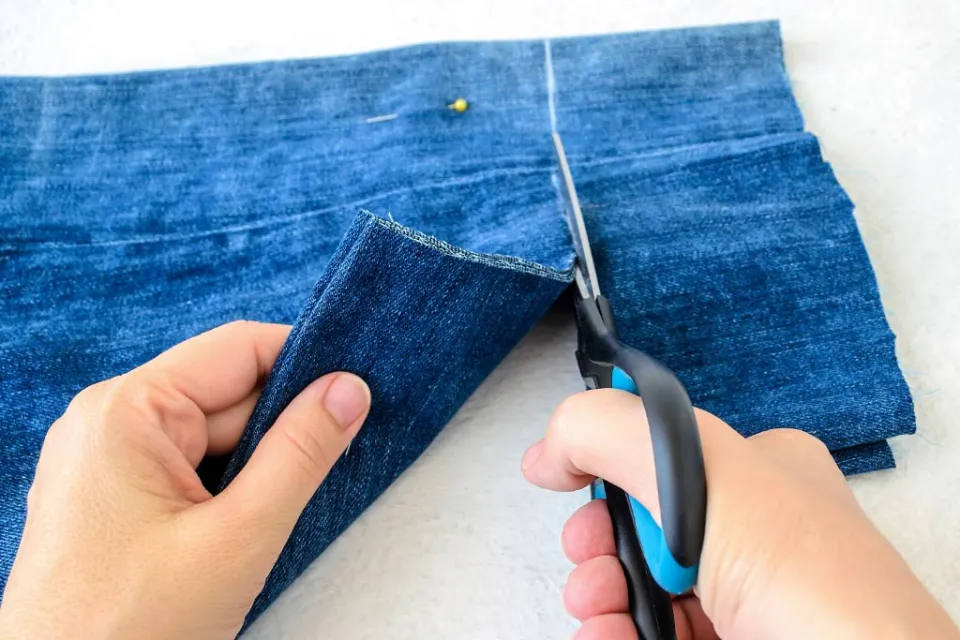
Read about
How to Use Hemming Tape?
Each type of hemming tape has a specific application process that includes a set of steps. Like setting up the fabric, some steps might be similar. Continue reading to learn how to use it.
Iron-on
- You should wash the material for a number of reasons. The first is to remove any residue that might weaken the glue, and the second is that freshly purchased fabric would shrink after the first wash. Avoid fabric softener for this, as its chemical structure reacts to the adhesive and weakens the bond;
- Pick a flat, smooth surface to work on. It will avoid crumpling and twisting of the tape;
- Gently unroll the tape to keep it straight and avoid twisting it;
- Measure the hem length to determine how much tape you need;
- Apply the tape between the two hem surfaces, right along the folding line;
- Start ironing, press gently for a few seconds, and then release. Use a single, slow slide with the iron to create a short hem. For longer hems, work in sections and check the tape placement;
- Finish up the edge: you can leave it as it is, as hemming tape usually “seals” the raw edges and creates a nice finish. However, there is no right or wrong way to sew it.
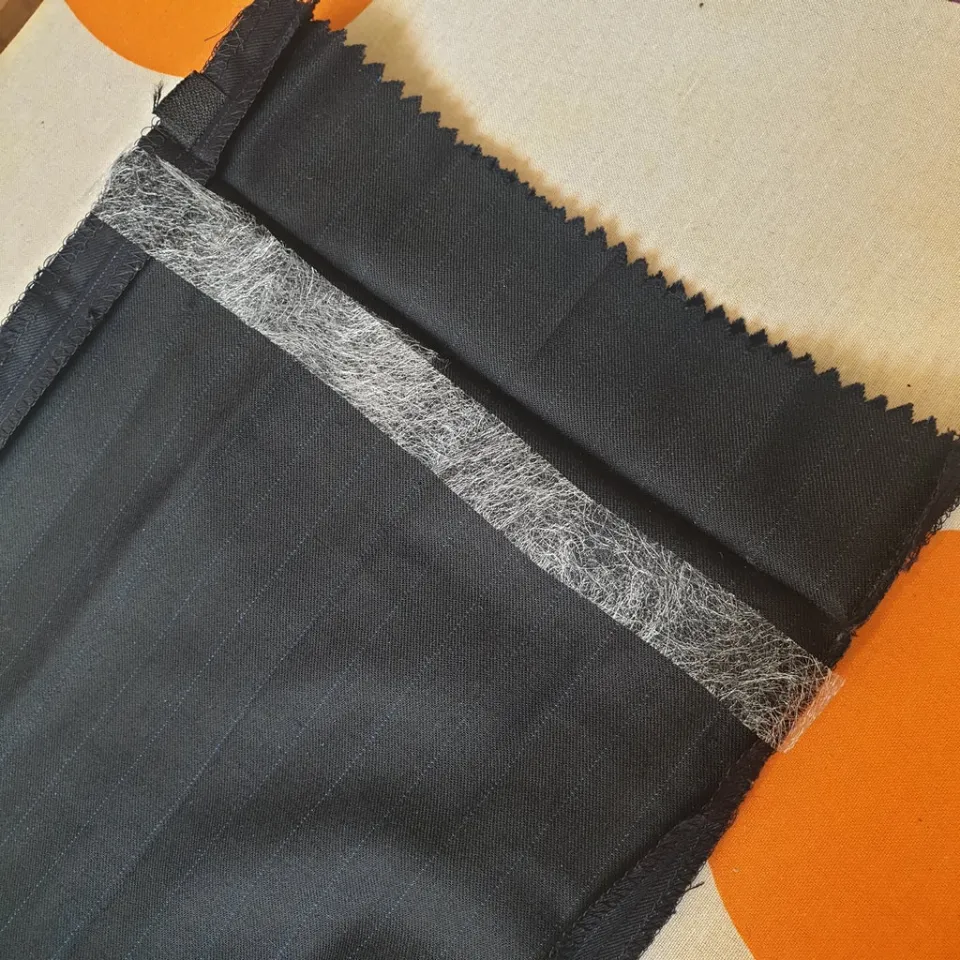
Pressure-pressed
- To ensure that the tape sticks properly, clean out the hem of any dust and debris. You can also wash the fabric and allow it to dry before hemming;
- Measure the hem length;
- Unroll the tape slowly;
- Apply the tape to the wrong side of the fabric, between the two hem sides;
- Start from one side and press the fabric at a medium pace until reaching the other side;
- In order for the tape to set, leave the hem as-is.
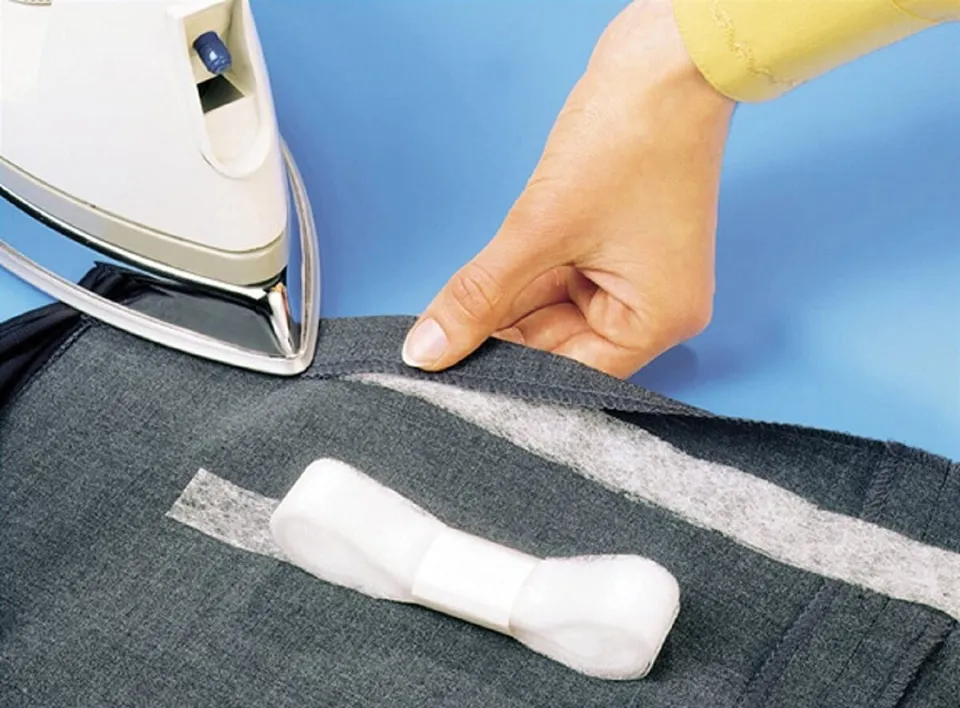
How to Use Hemming Tape on Various Fabrics?
- Knit fabrics: When a hem is sewn on knit fabrics, hemming tape gives it stability and firmness. It can be used in the same way as you would on woven fabrics to prevent puckering, particularly when sewing with a zig-zag stitch. For this half-circle skirt, I used hem tape to stabilize the hem and make sewing faster without stretching the material.
- As long as you can iron them, polyester and polyester blends are safe surfaces to use iron-on tape. Verify that you are ironing at the proper temperature. Too hot may damage the fabric and create wrinkles, if not even melt it completely.
- Denim – Jeans can be hemmed with double sided fusible tape. To ensure that the tape has sufficient adhesive to hold this fabric together, use thicker, heavier tape.
- Chiffon: To prevent any burns or damage, always use thin tape and a pressing cloth when working with this incredibly thin and delicate fabric.
- Curtains: You can use tape successfully for curtains and other home décor projects. Choose your tape depending on the fabric’s heaviness. Lightweight tape is appropriate for sheer curtains. Use thicker tape if your drapes are heavier.
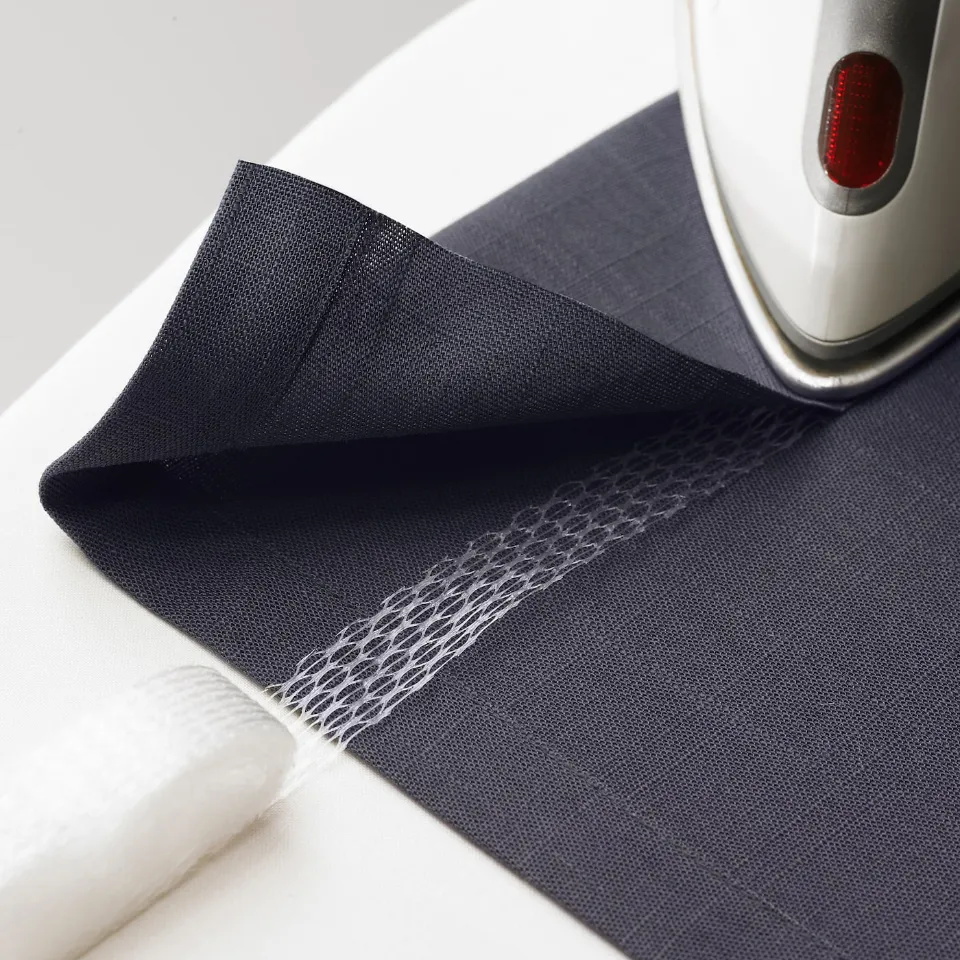
Tips: How to Use Hemming Tape?
- To get the fabric, iron temperature, and tape insertion just right, practice on a scrap of fabric.
- Use the iron firmly to press down. Immediately release after a brief period of holding.
- This is a press-and-release motion, not a continuous ironing.
- For delicate fabrics, use a pressing cloth.
- To check if the hemming tape has set on your test sample, let the fabric cool. The iron was not hot enough if the hem starts to peel away.
- Take care NOT to have the hemming web exposed. The iron will take it. It is difficult to get rid of the hemming web’s glue.
- Start the process in stages when you are ready to tape your hem. The tape should never be twisted and should always be smooth.
- Make sure there are no creases or tucks that could ruin the appearance of your hem by gently ironing on both sides of the hem.
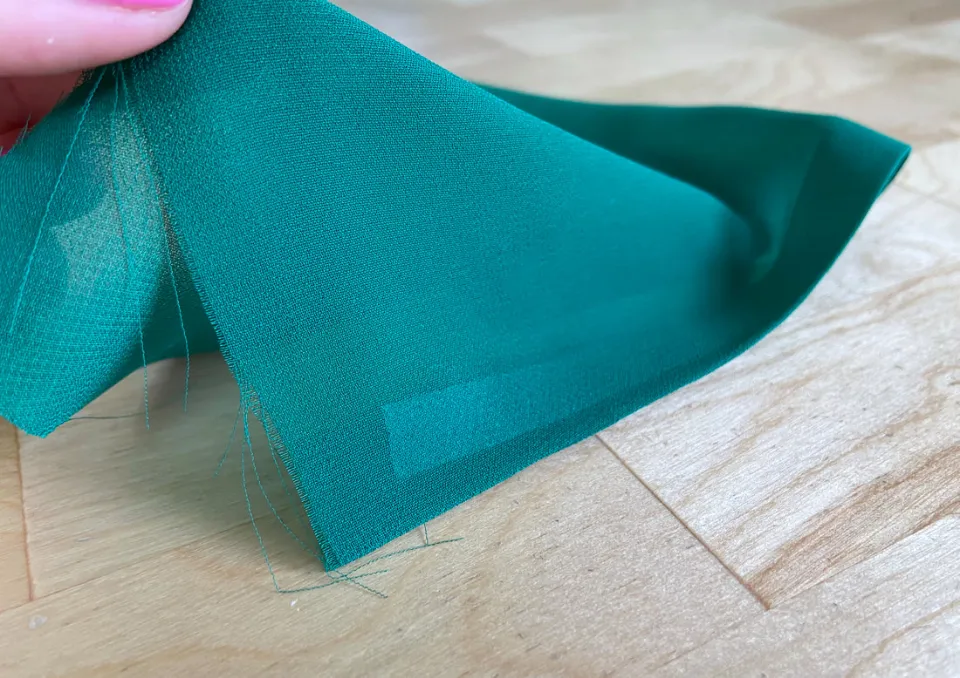
FAQs
Does Hemming Tape Work?
While using fusible hem tape is a quick alternative to sewing a hem in place, it is permanent and cannot be removed. If you are hemming a garment that may need to be adjusted at some point, for example hemming pants, this may not be the best solution as there is no way to remove the adhesive once it has been fused.
Which Way Does Hemming Tape Go?
All of the item should be inside out except the bottom where you will iron on the hem tape. Inspect the item to make sure it is the desired length.
Is Hemming Tape Permanent?
Good quality hemming tape is permanent and is designed to be washed. It is a fantastic substitute for using a needle and thread and will last without a doubt.
Does Hemming Tape Leave Marks?
Yes, fabric tape can be removed but it might leave some residue behind, depending on the type of adhesive used. If you need to remove hemming tape from your fabric, start by gently heating the tape with your iron, peeling it off, and then using a lint roller or adhesive remover to get rid of any leftovers.
Can You Sew over Hemming Tape?
There are no residues on your fabric. Additionally, the glue from the tape does not adhere at all to the sewing machine needle. You definitely don’t feel it in any way when you sew over the tape.
Summary: How to Use Hemming Tape?
A special and practical tool that every sewer should have on hand is hemming tape. It may take some time to learn how to use it, but once you do, you’ll be happy you did.
